
| Photos From Wyoming Tales and Trails This page: Greybull continued, the railroad, 1929 Flood, Bighorn River Bridge. |
 |

| Photos From Wyoming Tales and Trails This page: Greybull continued, the railroad, 1929 Flood, Bighorn River Bridge. |
 |
|
|
|
About This Site |
|
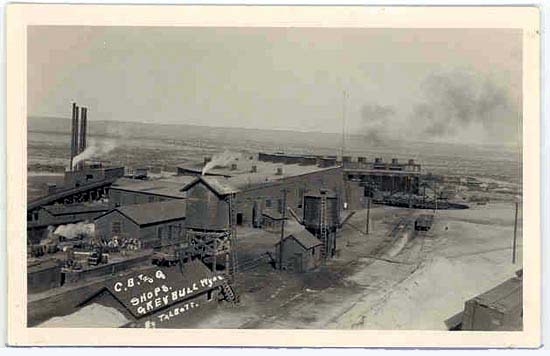 Railroad Shops, Greybull, approx. 1920. Photo by Gifford Talbott. The coming of the railroad created Greybull. The railroad made the refineries possible. The Midwest Refining Company shipped its products out by tank car, primarily for export through the Port of New Orleans. The town was laid out by the Lincoln Land Company, a seperate arm of the the Railroad. As discussed below, the railroad and the Lincoln Land Company constructed the bridges across the Bighorn River at Greybull and Manderson, making highway travel, without the use of ferries, to Sheridan and Worland practical.
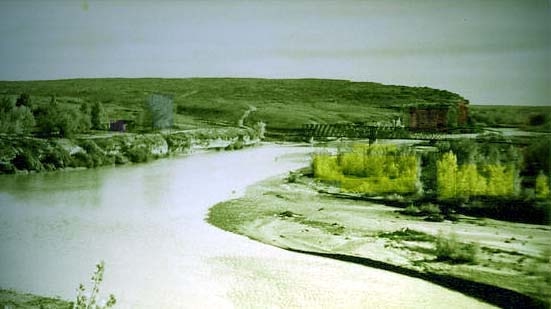 Bighorn River at Greybull, approx. 1939. Note the bridge in the background, discussed lower on page. The Bighorn does not always present such a serene and peaceful scene. As indicated in the next photo, between March 9 and 11, 1929, an ice jam in a shallow section of the Eight Mile Gorge downstream from the town caused a flood.
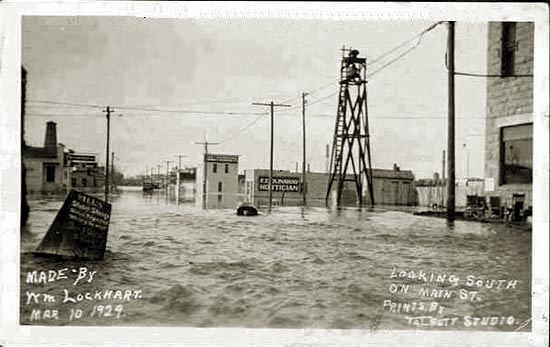 View of the 1929 Flood. Water flooded the town to a depth of four feet and caused over $150,000 (in 1929 dollars) damage.
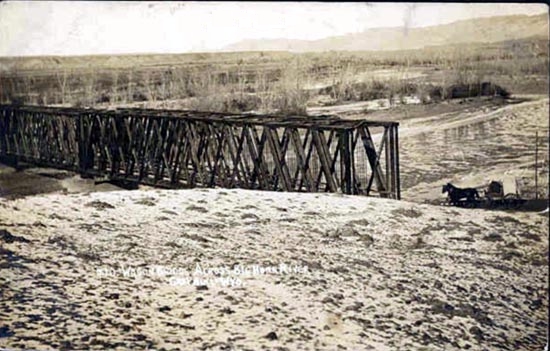 Two-Span Howe Truss Bridge over the Bighorn River, Greybull, undated. The bridge is a "Howe Truss" bridge originally owned by the Chicago, Burlington and Quincy Railroad. Howe Truss bridges were originally patented by a Massachusetts carpenter William Howe in 1840 and used a combination of timber and iron. One advantage of truss bridges was that they were easily movable and could be used elsewhere when superseded by newer bridges in their original location. Thus, as the railroad replaced its bridges, it could sell the old ones for use as vehicular bridges.
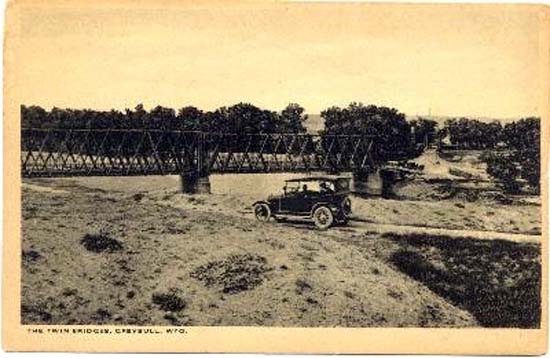 Howe Truss Bridge over the Bighorn River, Greybull, approx. 1920. In 1907, the railroad had several bridges which it offered for sale to the County. The County, rather than paying for the bridges itself, somehow managed to have the Lincoln Land Company purchase two surplus Howe Truss bridges which were then erected in 1908 at Greybull and Manderson. Nether the railroad or the Lincoln Land Company were altogether altruistic. Certainly, construction of the bridges would bring trade to the towns and increase trade for the railroad and land values and sales for the land company. Thus, the presence of the bridge also increased the growth of Greybull. Later a third surplus bridge was erected in the same manner at Kane. The highway, however, remained dirt until the late 1930's after the Sheridan Highway was designated as an extension of U.S. Highway 14 in 1936.
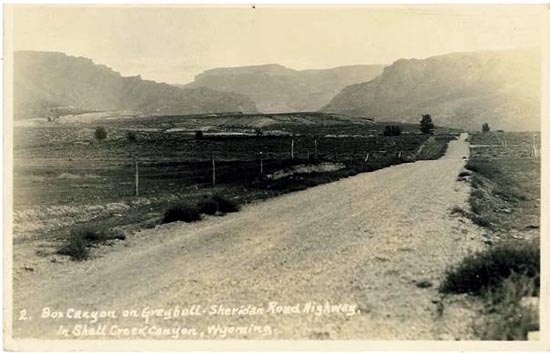 Greybull to Sheridan Highway at Shell Canyon, 1936.
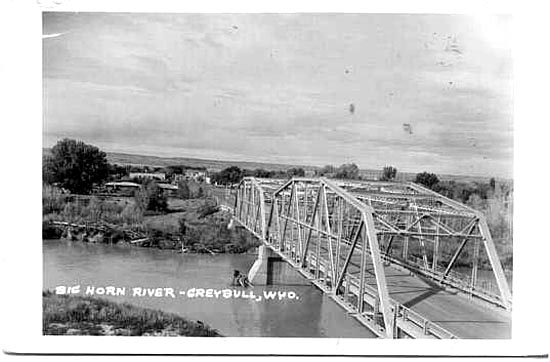 "Camelback" Pratt Truss Bridge over the Bighorn River, Greybull, 1940's. In 1917, the Wyoming Highway Department was formed. This resulted in bridges being constructed on common specifications. Prior to the formation of the Department, counties were responsible for the construction of bridges. Generally speaking, bids were let to national bridge companies as an early form of "design-build;" that is the successful bidder would both design and build the bridge using standard fabricated parts of their own manufacture. The "Pratt" truss was originally patented by Thomas and Caleb Pratt in 1844. With the coming of steel, the design was easly adapted to the new material. The design was subsequently modified by Charles H. Parker by the addition of the canted top chords which had the effect of reducing weight. The design is, therefore, sometimes referred to a a Parker Truss bridge. In the 1930's through the early 1950's the design was popular on federal-aid highways.
Next page: Greybull continued. |